Here's the most exciting home theater tech coming in 2020
From 8K TVs to machine learning, here's what you need to know.
 Credit:
Reviewed / Lee Neikirk
Credit:
Reviewed / Lee Neikirk
Products are chosen independently by our editors. Purchases made through our links may earn us a commission.
There's no denying that 2020 is a futuristic-sounding year. Something about "twenty-twenty" just conjures images of flying cars and teleportation and robot overlords.
Okay, we might not be there yet, but there's still some really cool home theater and TV tech on the way—much of it having crystallized during CES 2020 in Las Vegas last week. We're talking humongous 8K TVs, machine learning to optimize picture and sound, modular soundbars, and even more Alexa and Google Home integration. Here's what you need to know about going into 2020.
The New Year's Resolution is 8K
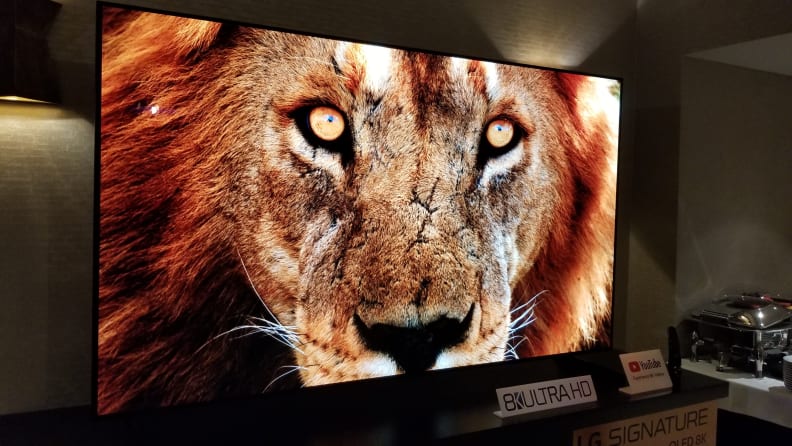
8K TVs aren't mainstream yet, but they're taking even more spotlight in 2020
Do 4K TVs still feel like a brand new thing that just came out? Well, I have some bad news. This year, the top TVs from big names like Samsung, LG, and Sony are all 8K models.
These TVs have a resolution of 7,680 x 4,320, over 33 million pixels. Yowza! The most insanely tricked out and expensive TVs in 2020 are equipped with 8K resolution. Samsung has three 8K QLED TV series this year—the Q950TS, Q900TS, and Q800T series—while LG has added an 8K OLED (the ZX series) and NanoCell (Nano97 and Nano99) models, and Sony has added the Z8H 8K LED line, which includes 75- and 85-inch 8K models.
While pricing hasn't been announced for any of these TVs yet, Sony's 98-inch 8K TV last year cost around $70,000. While we're hopeful that the 2020 8K models won't be quite so staggeringly pricy, it's safe to say they will be the most expensive TVs to roll out this year.
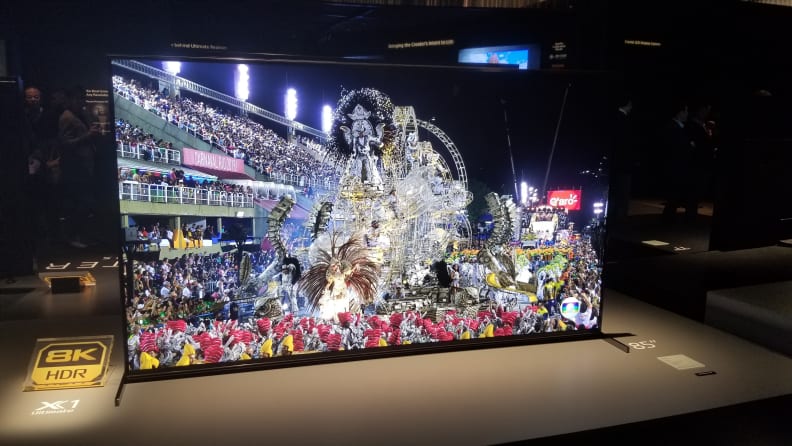
Sony's 75- and 85-inch Z8H LED TVs will feature 8K resolution, alongside a smorgasbord of other high-tech features.
So what's the deal with 8K? On top of being twice the resolution of 4K models, it's also the highest defined resolution within the scope of so-called "Ultra High Definition." So while this might be the last resolution increase we see in TVs for a while, only time will tell. The move to 8K resolution is the first step on the "UHD roadmap," which hopes to also see improvements to aspects like High Dynamic Range performance, HDMI data transfer speeds, color production ability, and so on.
Worry not: there will still be lots of 4K TVs this year, and even some full-HD (1080p) and HD (720p) sets kicking around. In fact, despite many hopeful claims that 2020 is the year that 8K "enters the mainstream," it's not very likely. There is not very much 8K content available yet, and it will take even more time for things like streaming apps, cable TV, and disc players to catch up, not to mention to be fitted with the right codecs and handshakes to transfer 8K video successfully.
So, will 8K be mainstream in 2020? I highly doubt it. However, the good news is that the "best" 4K TVs will now be scaled down in price, however much, to make room for the tippy-top flagship 8K TVs. This means we expect lots of great options in reasonable price ranges for everyone who isn't a deeply pocketed early adopter.
Soundbars are getting fancier, too
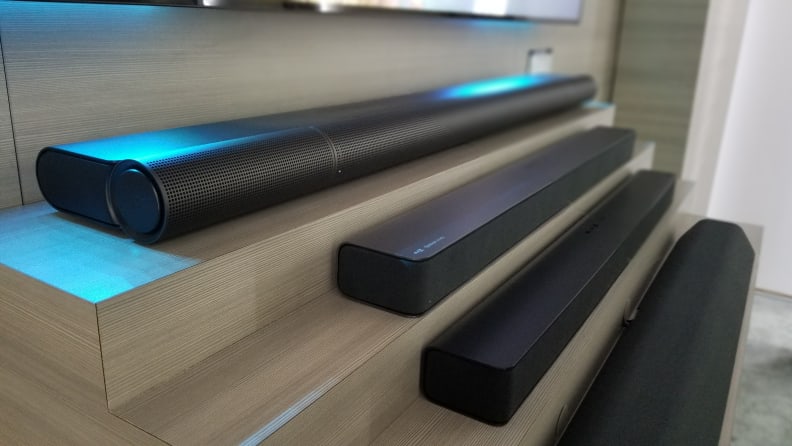
Nothing has replaced the soundbar in 2020—they're more ubiquitous than ever.
The amount quality of soundbars has been steadily increasing for the last several years, and it doesn't look like that trend is about to stop in 2020. Lots of companies debuted fancy new soundbars—or at least announced intentions to bring them to market—during CES 2020.
For example, Vizio has made an attempt to simplify the sometimes confusing naming scheme of its popular soundbar lineup, adding new V-Series and M-Series soundbars that coincide with its V- and M-Series TVs. The company also introduced an "All-in-One" option for folks without a ton of space, and a soundbar called "Elevate" that uses rotating speakers to switch between 5.1- and 5.1.4-channel audio modes—it won one of our CES Editors' Choice awards.
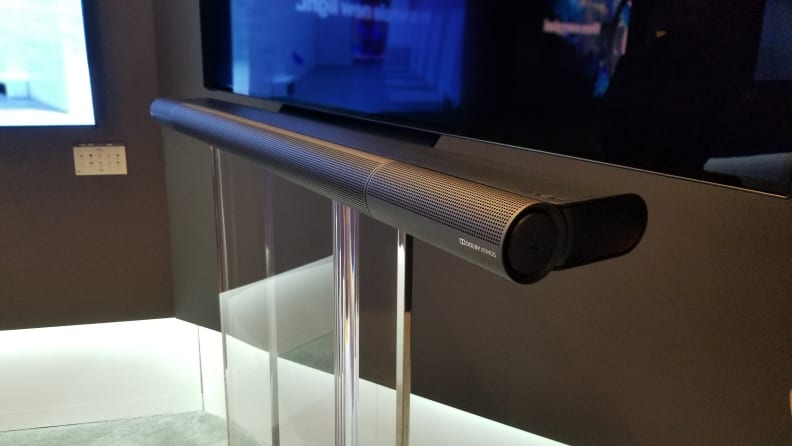
Vizio's "Elevate" soundbar is one of the more unique soundbar offerings coming in 2020.
Samsung-owned companies like JBL and harmon/kardon, as well as TCL, also introduced new soundbars, the latter of which has a promising new Dolby Atmos-capable entrant called the Alto 9+, which looks to be TCL's most advanced soundbar yet. The name of the game in 2020 will undoubtedly be Dolby Atmos functionality, specifically soundbars that don't just virtually emulate so-called object oriented audio, but actually produce it via on-board upward-firing speakers.
While we've seen Dolby Atmos-ready soundbars with upward-firing speakers before, they're usually very expensive: sometimes $1,200 or even $1,500. There's a strong chance that options like the Vizio Elevate and TCL Alto 9+ will be some of the first affordable soundbars with real upward-firing speakers, which is pretty exciting. However, it also seems like there will be plenty of high-quality, affordable soundbars to choose from, too.
Vertical TVs? Yup!
One of the craziest things to come out of CES 2020 in the home theater space was Samsung's "Sero" TV. The Sero, Korean for "vertical," is a new entry into Samsung's "Lifestyle" series of TVs, which also includes the Serif and Frame models.
The Sero isn't permanently vertical, however: it rotates from standard landscape orientation to portrait orientation in order to better serve the alleged desires of millenials and GenZ viewers. Samsung has stated that the TV makes a lot of sense in a world where 50% of smartphone video is shot vertically, and this is also a fairly clear push to capture the interest of younger TV buyers.
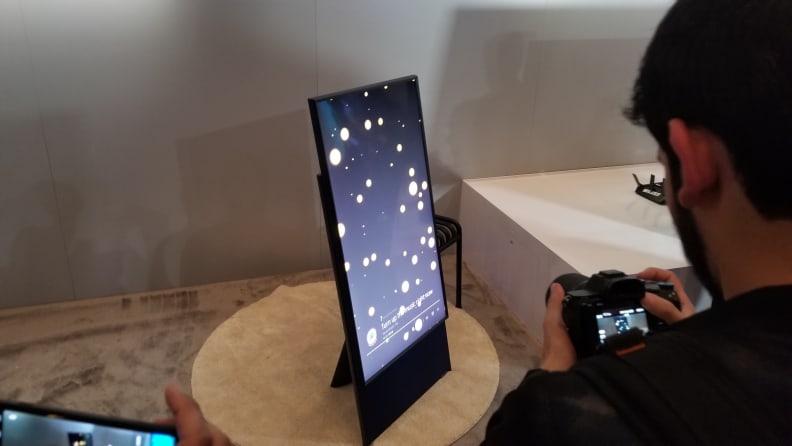
Samsung's "Sero" TV is one of the craziest things to show up at CES in a while.
I can't imagine a lot of people will buy the Sero in 2020, but you never know. The real issue seems to be a potential disconnect between younger buyers not tending to be able to afford fancy TVs, and the fact that a mechanically rotating TV is definitely not going to be affordable. However, utility aside, the Sero might just start a trend this year in TVs that present a vertical orientation—to the chagrin of filmmakers everywhere.
Filmmaker Mode, huzzah!
Speaking of filmmakers, they've got something to be excited about, too. CES 2020 saw further adoption of the new "Filmmaker Mode," a TV setting pioneered by the UHD Alliance in cooperation with directors like Christopher Nolan, Patty Jenkins, Martin Scorsese, and Rian Johnson.
The idea behind Filmmaker Mode is to preserve the cinematographic and directorial integrity of the film or TV show you're watching. To that end, TVs with Filmmaker Mode enabled will automatically adjust their color, contrast, frame rate, and aspect ratio in order to best suit the content being displayed, something made possible through a combination of metadata and the huge bevy of customization options found in most modern TV picture settings.
As of yet, the new mode has been adopted by manufacturers like Samsung, LG, Panasonic, and Vizio, among others. While the technical details are pretty complex, Filmmaker Mode is expected to work similarly to something like HDR or Dolby Vision: some of the data encoded into the audio/video content simply instructs the TV to change specific picture settings to best suit the film in question, so the user only needs to sit back and watch.
